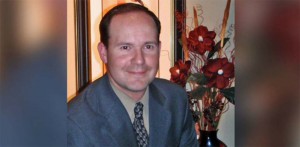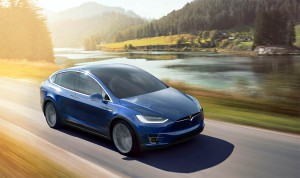
Joshua Brown, 40, said his Tesla Autopilot system had prevented an earlier crash before his death in Florida on May 7.
Things are heating up for Tesla Motors, the battery-carmaker finding itself blamed for a third crash using its Autopilot system, even as the U.S. Securities and Exchange Commission reportedly begins an investigation into Tesla’s delayed public disclosure of the first crash.
That May 7 accident led to the death of a 40-year-old former Navy Seal but while Tesla did disclose the situation to the National Highway Traffic Safety Administration nine days later, the company took nearly two months to make a public announcement. It waited until after a $2 billion stock offering, CEO Elon Musk later tweeting that the crash was “not material to the value of Tesla.”
Whether that’s accurate could be up to the SEC to decide. Meanwhile, some other critics are calling for an investigation of Tesla’s plan to purchase SolarCity, a deal that has raised flags for some because of CEO Musk’s personal ties to the solar panel maker.
The latest round of controversy comes even as the South African-born Musk has signaled plans to release his next “masterplan” for Tesla, an announcement that could signal plans to add new products to the California firm’s portfolio or even lead it into new lines of business.
(For more on that planned announcement, Click Here.)
The first crash involving a Tesla driven in Autopilot mode occurred on May 7 in Florida when Model S owner Joshua Brown struck a turning tractor trailer. The carmaker has acknowledged the vehicle’s cameras did not see the white truck against a bright sky, the sedan’s radar also confusing the rig for an overhead sign.
(For more on the fatal Tesla Autopilot crash, Click Here.)
The second crash took place on July 1 about 100 miles east of Pittsburgh on the Pennsylvania Turnpike when suburban Detroit art gallery owner Albert Scaglione’s Model X struck a guardrail and rolled over. He claims to have just activated the Autopilot system which is designed for limited hands-free driving.
Tesla subsequently issued a statement that said it has “no data to suggest that Autopilot was engaged at the time of the incident.”
The third crash was reported early Sunday morning shortly after a Tesla vehicle exited Interstate 90 near Whitehall, Montana. There were no injuries, though other details were not released. The driver claimed to have been using the Autopilot system, though Montana Highway Patrol Trooper Jade Schope told the Associated Press, “I have no way of verifying whether it was or wasn’t” in use.
The National Highway Traffic Safety Administration has already launched an investigation into the crash that killed Model S owner Brown. The new SEC investigation was reported by the Wall Street Journal, though a government spokesman declined comment when asked about the probe.
It appears to focus on whether Tesla improperly delayed reporting the first crash and whether that fatal accident might have otherwise had a material impact on Tesla’s recent stock sale, after all.
There are some who want a probe of Tesla’s planned acquisition of SolarCity, as well. Even some of the maker’s most bullish supporters have raised questions about the deal. For his part, CEO Musk contends there will be significant synergies linking Tesla’s automotive and back-up power businesses with SolarCity’s renewable energy operations. But the deal is now undergoing an internal review.
Tesla’s stock has been riding a roller-coaster in recent months, surging after the unveiling of the new Model 3 sedan in March, Tesla taking about 400,000 advance reservations in a matter of weeks. But concerns about the SolarCity deal and the Autopilot problems have been compounded by the maker’s weak second-quarter sales and production numbers. While both were up over the first quarter they nonetheless fell well short of Tesla’s target.
(Tesla numbers up for Q2 but sales, production fall short of goal. Click Here for more.)
A real test of support for the fiercely independent automaker will come later this week when it releases what Musk called its “Top Secret Tesla Masterplan, Part 2,” in a Sunday tweet. The original “masterplan,” revealed in 2006, outlined the company’s intent to launch a high-end battery sedan that became the Model S, as well as a more mainstream offering that will be known as the Model 3.
The carmaker’s goal is to launch that vehicle during the second half of 2017, a move it contends will boost its output to 500,000 vehicles in 2018, or about 10 times its total production last year.


